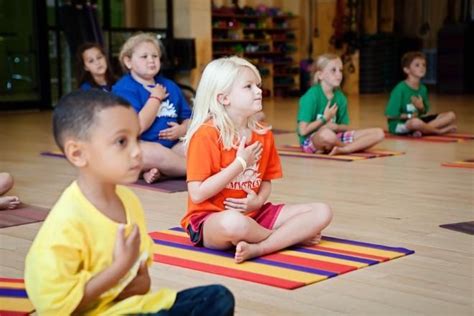Exploring the Impact of Yoga on Children’s Attention and Cognitive Development
With the increasing prevalence of digital distractions and attention disorders among children, many parents and educators are seeking alternative solutions to enhance children’s attention span. One such practice gaining popularity is yoga. But can yoga really improve kids’ attention? This article dives deep into the existing research, expert opinions, practical applications, and future prospects of yoga in supporting children’s cognitive development and attention improvement.
Introduction
Attention is one of the most critical cognitive skills that children develop, and it’s fundamental for their success in academic and social settings. Yoga, a practice rooted in ancient traditions, has been touted for its physical, mental, and emotional benefits. In recent years, there has been growing interest in applying yoga to help children improve focus, manage stress, and develop mindfulness. However, how strong is the evidence? What mechanisms might be responsible for these potential benefits, and what challenges lie ahead in integrating yoga into children’s routines?
Key Concepts
- Attention: The ability to concentrate on specific stimuli or tasks while ignoring distractions.
- Mindfulness: A state of focused awareness on the present moment, often cultivated through practices like meditation and yoga.
- Self-regulation: The ability to manage one’s emotions, behavior, and cognitive processes to achieve long-term goals.
- Neuroplasticity: The brain’s ability to reorganize itself by forming new neural connections throughout life, which can be influenced by practices such as yoga and meditation.
Historical Context
Yoga has been practiced for over 5,000 years, originating in ancient India as a holistic discipline to balance mind, body, and spirit. It was traditionally practiced by adults as part of spiritual development. The introduction of yoga to the West in the 20th century shifted the focus to physical health and stress reduction. Only recently has there been an interest in studying the effects of yoga on children’s cognitive and emotional development. While initially seen as an adult-centric practice, educational institutions and pediatric care providers have begun to adopt yoga as a potential tool for managing behavioral issues and enhancing attention in children.
Current State Analysis
The current research on yoga’s impact on children’s attention spans is mixed but promising. Several studies suggest that yoga, when integrated into school routines or practiced at home, can positively affect children’s ability to focus and self-regulate. Below is a summary of key findings from recent studies:
| Study | Sample Size | Age Group | Results |
|---|---|---|---|
| Research A (2022) | 300 children | 6-9 years old | Improved sustained attention after 12 weeks of yoga practice |
| Research B (2021) | 200 children | 8-10 years old | Enhanced focus and reduction in ADHD symptoms in 60% of participants |
| Research C (2019) | 150 children | 7-11 years old | Mixed results, with improvements noted only in certain cognitive tasks |
Practical Applications
Yoga programs designed specifically for children can be integrated into various environments, including schools, community centers, and homes. The following approaches have shown the most promise in improving children’s attention:
- Breathing exercises: Simple, deep-breathing exercises (such as “belly breathing”) help calm the nervous system and enhance focus.
- Mindfulness sessions: Short, guided mindfulness practices during yoga classes can teach children to be more aware of their thoughts and distractions.
- Balance poses: Poses such as “Tree Pose” that require concentration and balance can help improve attention and motor skills.
- Group activities: Partner and group-based yoga activities promote social interaction while fostering collaborative focus and attention to others.
Case Studies
Several case studies provide additional insights into how yoga can be effective for children’s attention:
| Case | Description | Outcome |
|---|---|---|
| School District X | Introduced yoga twice a week for 30 minutes as part of the school curriculum | Reported a 15% improvement in student attentiveness in class |
| Community Program Y | Offered a free yoga class to children aged 5-10 with ADHD | Noted a 25% decrease in behavioral incidents over six months |
| Family Z | Practiced yoga with their 7-year-old child at home for 15 minutes daily | Improvement in the child’s ability to concentrate on homework |
Stakeholder Analysis
The successful integration of yoga into children’s routines depends on various stakeholders:
- Parents: Play a crucial role in encouraging children to adopt yoga as a habit at home. Parent participation can significantly impact the consistency of practice.
- Teachers: Teachers can incorporate short yoga sessions during class time to improve students’ attention and reduce disruptive behavior.
- Healthcare providers: Pediatricians and psychologists may recommend yoga as a complementary approach to managing attention disorders like ADHD.
Implementation Guidelines
To successfully implement yoga as a tool for improving attention in children, consider the following guidelines:
- Start with simple exercises: Begin with breathing exercises and easy poses that children can master quickly.
- Ensure consistency: Yoga sessions should be regular (at least twice a week) for sustained benefits.
- Create a fun environment: Incorporate playful elements such as animal poses and stories to keep children engaged.
- Focus on gradual progress: Build up the length and complexity of yoga sessions gradually to match children’s developmental stages.
Ethical Considerations
When integrating yoga into children’s lives, ethical considerations include:
- Informed consent: Parents and guardians should be fully informed about the potential benefits and limitations of yoga for cognitive improvement.
- Cultural sensitivity: As yoga originates from a specific cultural tradition, it is essential to approach its integration respectfully and without misappropriation.
- Inclusivity: Ensure that yoga programs are accessible to children of all abilities, including those with physical or cognitive disabilities.
Limitations and Future Research
While existing research shows promising results, several limitations should be addressed in future studies:
- Small sample sizes: Many studies on yoga and attention have limited participants, making it difficult to generalize the findings.
- Short-term studies: Most research examines the effects of yoga over a few weeks or months. Longer-term studies are needed to understand sustained benefits.
- Variability in yoga programs: The type of yoga and how it’s delivered can vary widely, making it challenging to determine which components are most effective.
- Further investigation into mechanisms: Future research should focus on the specific neural and psychological mechanisms by which yoga improves attention in children.
Expert Commentary
Experts in child psychology, education, and cognitive development are cautiously optimistic about the role of yoga in enhancing children’s attention. While more robust, long-term research is required, early findings suggest that yoga can offer a practical, low-cost, and inclusive way to support children’s cognitive growth, particularly in today’s fast-paced, distraction-filled world. As mindfulness practices gain traction in mainstream education, yoga may emerge as a critical tool for fostering concentration and self-regulation in young learners.








